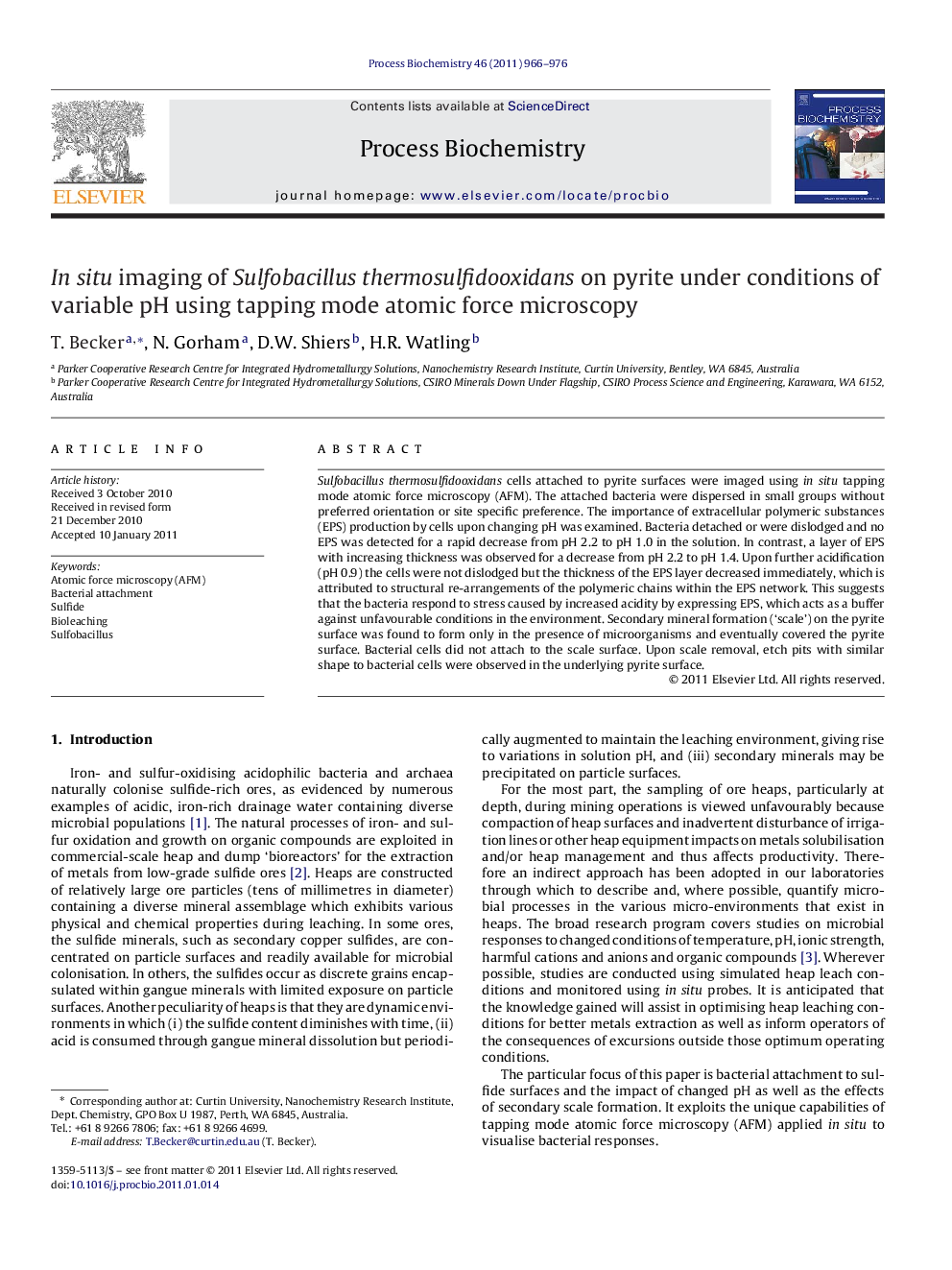| Article ID | Journal | Published Year | Pages | File Type |
|---|---|---|---|---|
| 34885 | Process Biochemistry | 2011 | 11 Pages |
Sulfobacillus thermosulfidooxidans cells attached to pyrite surfaces were imaged using in situ tapping mode atomic force microscopy (AFM). The attached bacteria were dispersed in small groups without preferred orientation or site specific preference. The importance of extracellular polymeric substances (EPS) production by cells upon changing pH was examined. Bacteria detached or were dislodged and no EPS was detected for a rapid decrease from pH 2.2 to pH 1.0 in the solution. In contrast, a layer of EPS with increasing thickness was observed for a decrease from pH 2.2 to pH 1.4. Upon further acidification (pH 0.9) the cells were not dislodged but the thickness of the EPS layer decreased immediately, which is attributed to structural re-arrangements of the polymeric chains within the EPS network. This suggests that the bacteria respond to stress caused by increased acidity by expressing EPS, which acts as a buffer against unfavourable conditions in the environment. Secondary mineral formation (‘scale’) on the pyrite surface was found to form only in the presence of microorganisms and eventually covered the pyrite surface. Bacterial cells did not attach to the scale surface. Upon scale removal, etch pits with similar shape to bacterial cells were observed in the underlying pyrite surface.
